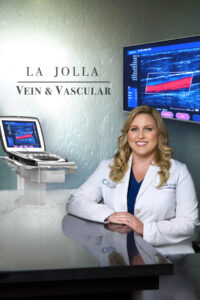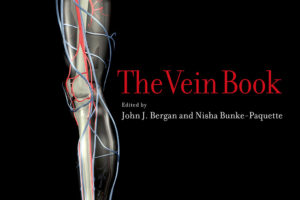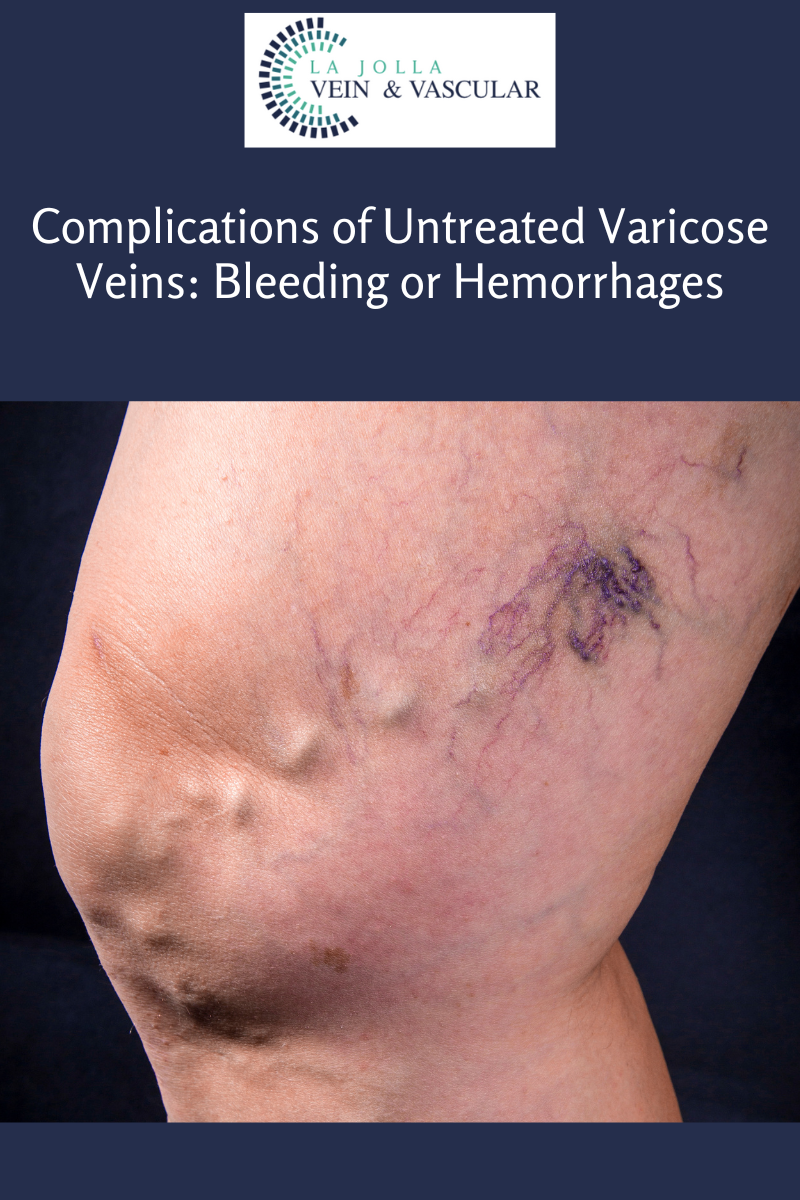Our vein specialists are not your average doctors. They train and teach other doctors, medical students, physician assistants, and empower and educate patients everyday with knowledge and choices. They lead clinical research studies and contribute to scientific journal and textbook publications. Our recent research made the cover of the “Journal for Vascular Ultrasound” in March, 2018. Our doctors continuously strive to elevate the standard in vein care- they are fellowship-trained, board certified in venous and lymphatic disease, and earned additional credentials in ultrasound interpretation to provide comprehensive vein care for all patients.
Nisha Bunke, MD FACPh, RPhS
Venous Disease Interventionist, Vein Clinic Medical Director

Dr. Nisha Bunke was the first physician in the United States to complete fellowship training supported by the American Vein and Lymphatic Society (formerly known as the American College of Phlebology) in 2008 and is a diplomate of the American Board of Venous and Lymphatic Medicine. Over the past decade, Dr. Bunke has dedicated her career to treating patients with venous and lymphatic conditions and advancing the field of vein care.
Being inspired by her mentor, world-renowned vascular surgeon, Dr. John Bergan, who emphasized that venous disease is a special condition that requires specialized care, she founded La Jolla Vein Care in 2010. Under her leadership, La Jolla Vein Care was awarded accreditation in Vein Clinic and Vascular Testing by the Intersocietal Accreditation Commission (IAC). La Jolla Vein Care is the first dedicated vein care facility in the region to earn this distinction.
Prior to turning her complete attention to La Jolla Vein Care, she has held appointments as a Volunteer Clinical Instructor of Surgery at the University of California San Diego (UCSD) School of Medicine, and Veterans (VA) Medical Center. In addition to these duties, for five years, Dr. Bunke managed the vein clinics at the VA Medical Center La Jolla, providing vein care for our veterans. She was also a physician at UCSD Healthcare System’s Department of Vascular Surgery, where she evaluated and treated patients with venous disease.
Dr. Bunke is a physician and scientist, actively leading clinical research studies. In 2009, Dr. Bunke was awarded the International Union of Phlebologie Research Fellowship and the Best Young Presenter Award in Monaco. Collectively, Dr. Bunke and Dr. Bergan were awarded the 2008 JOBST Research Award for the Advancement of Phlebology for their research on Inflammatory Biomarkers of Venous Insufficiency. Dr. Bunke also developed Recova, a post-surgery recovery cream.
Dr. Bunke has been named as a finalist by the San Diego Business Journal’s Women Who Mean Business Award and San Diego Magazine’s Woman of the Year award. In 2018, she was named as the top 25 Women of the Year by the San Diego Business Journal.
Dr. Bunke’s Affiliations
Moreover, Dr. Bunke is a member of the Scripps Ximed Medical Group, The Clinical and Translational Research Institute (CTRI) of the University of California San Diego (UCSD), the American Medical Association (AMA), San Diego County Medical Society, Society for Vascular Medicine, American Vein and Lymphatic Society, American Venous Forum (AVF) and the Society for Vascular Ultrasound (SVU). Dr. Bunke has numerous publications in both scientific journals and medical textbooks.
Dr. Bunke is co-editor of the most widely used textbook for vascular physicians, “The Vein Book”

Books/ Book Chapters: Dr. Nisha Bunke
Bergan, JJ, Bunke, N. “Outcome Measures in Venous Disease.” In: Fast Facts- Vascular and Endovascular Surgery Highlights 2008-09. Davies, A., Mitchell, A. M. Health Press UK
Bergan, JJ. Bunke, N. “Varicose Veins and Chronic Venous Insufficiency.” In: Total Endovascular Series Venous Diseases Contemporary Management.’ Lumsden, A, Davies, M.
Bergan, JJ, Bunke, N. “Venous Disorders.” In: Educational Review Manual in General Surgery. 8th Edition. Castle Connolly Graduate Medical Publishing.
Bergan, JJ, Bunke, N. “Pathophysiology of Chronic Venous Disease.” In: The European Venous Course Book.
Bergan JJ, Bunke, N. “Endovenous Procedures in Venous Disease.” In: Peripheral Endovascular Interventions. White, R, Fogarty, T. 3rd Ed.
Bergan, JJ, Pascarella, L, Bunke, N. “Venous Anatomy, Physiology and Pathophysiology.” In: Treatment of Leg Veins, 2nd ed. Alam, M., Silapunt, S. Martin Mellor Publishing Ltd. UK
Bergan, J. Lee, BB, Bunke N. “Lymphatic Disease.” In: Clinical Review of Vascular Surgery. Edited by Sapan Desai, MD, PhD and Cynthia Shortell, MD.
Bergan, J. and Bunke, N. General Considerations. In: Lymphedema: A Concise Compendium of Theory and Practice. Edited by Byung-Boong Lee, John Bergan, Stanley G. Rockson 2011.
Bergan, JJ, Bunke-Paquette, N, editors. The Vein Book, 2nd edition. Oxford University Press, New York, NY USA. 2014
Bunke-Paquette, N. “Complications of Liquid Sclerotherapy.” In: The Vein Book, 2nd ed. Bergan, JJ, Bunke-Paquette, N. Oxford University Press, New York, NY USA. 2014
Loerzel, N, Ratcliff V, Bunke-Paquette, N, et al. “Ultrasound Examination of the Patient with Primary Venous Insufficiency.” In: The Vein Book, 2nd ed. Bergan, JJ, Bunke-Paquette, N. Oxford University Press, New York, NY USA. 2014
Bunke-Paquette, N, Loerzel, N, Bergan, JJ. “Ultrasound-Guided Catheter and Foam Therapy for Venous Insufficiency.’ In: The Vein Book, 2nd ed. Bergan, JJ, Bunke- Paquette, N. Oxford University Press, New York, NY USA. 2014
Bergan, JJ, Pascarella, L, Bunke-Paquette, N. “Perforating Veins.” In: The Vein Book, 2nd ed. Bergan, JJ, Bunke-Paquette, N. Oxford University Press, New York, NY USA. 2014
Bunke-Paquette, N. Russell, T, Broder, K, Li, A. “Medical Management of the Venous Leg Ulcer.” In: The Vein Book, 2nd ed. Bergan, JJ, Bunke-Paquette, N. Oxford University Press, New York, NY USA. 2014
Peer-Reviewed Journals
Bunke N, Brown K, Bergan J. Foam sclerotherapy: techniques and uses. Perspect Vasc Surg Endovasc Ther. 2009 Jun;21(2):91-3
Bunke N, Brown K, Bergan J. Phlebolymphemeda: usually unrecognized, often poorly treated. Perspect Vasc Surg Endovasc Ther. 2009 Jun;21(2):65
B.B. Lee, M. Andrade, P.L. Antignani,F. Boccardo, N. Bunke, et. al. Guidelines: Diagnosis and treatment of primary lymphedema consensus document of the international union of phlebology (IUP)-2013. International Angiology. 2013 Dec: (32): 541-574
“Bringing Experts Together for Unparalleled Vein and Vascular Care”
La Jolla Vein & Vascular (formerly La Jolla Vein Care) is committed to bringing experts together for unparalleled vein and vascular care.
Nisha Bunke, MD, Sarah Lucas, MD, and Elliot DeYoung, MD are specialists who combine their experience and expertise to offer world-class vascular care.
Our accredited center is also a nationally known teaching site and center of excellence.
For more information on treatments and to book a consultation, please give our office a call at 858-550-0330.
For a deeper dive into vein and vascular care, please check out our Youtube Channel at this link.
For more information on varicose veins and eliminating underlying venous insufficiency, check this link out full of resources.
Please follow our social media Instagram Profile and Tik Tok Profile for more fun videos and educational information.














